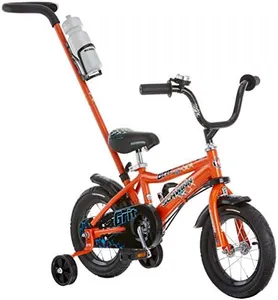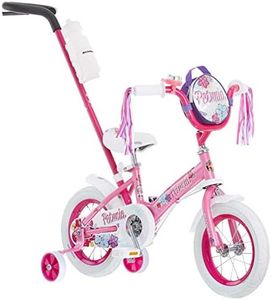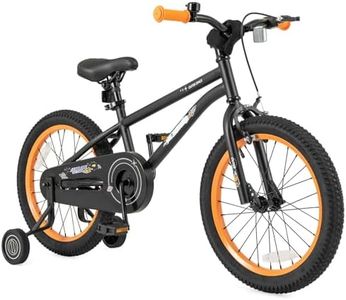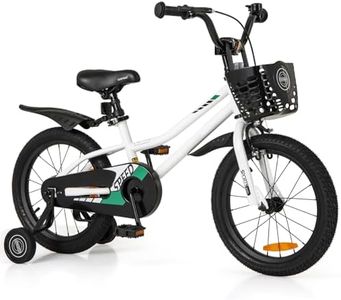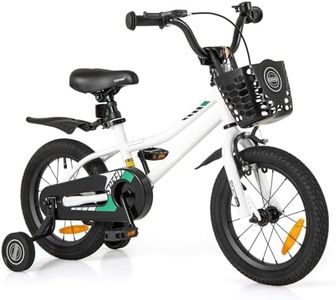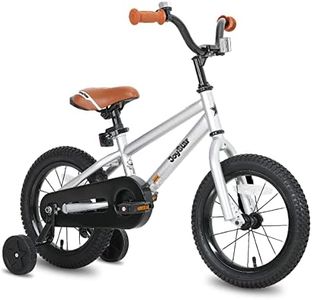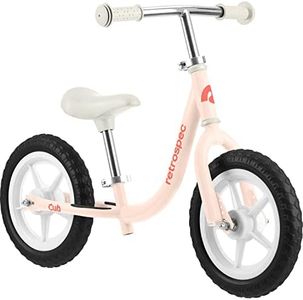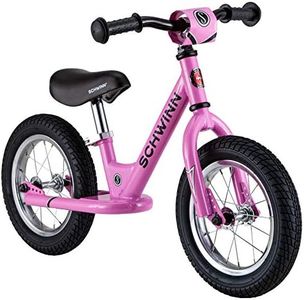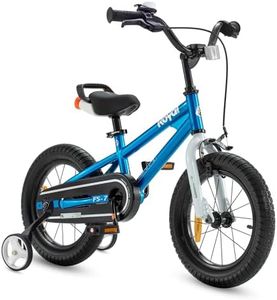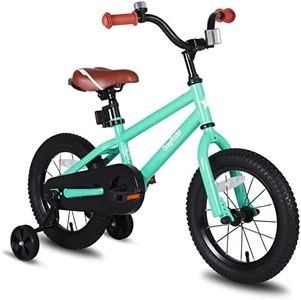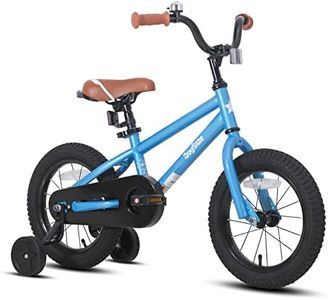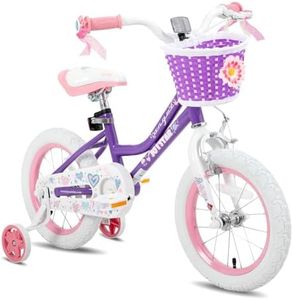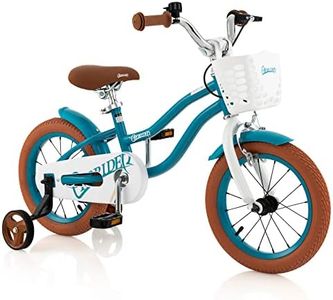We Use CookiesWe use cookies to enhance the security, performance,
functionality and for analytical and promotional activities. By continuing to browse this site you
are agreeing to our privacy policy
10 Best Beginner Bicycle For Kids
From leading brands and best sellers available on the web.Buying Guide for the Best Beginner Bicycle For Kids
Choosing a beginner bicycle for kids is an exciting step, and it's important to focus on safety, comfort, and enjoyment to help your child develop confidence and skills. A well-fitting bicycle encourages regular use and gives your child a positive, lifelong attitude toward cycling. The key is to find a bike that matches your child's size and needs, rather than simply choosing one that 'they'll grow into.' Understanding the most important aspects will help you make a choice that your child will love and feel safe riding.Wheel SizeThe wheel size on a kid's bicycle determines how big and tall the bike is, which directly affects how comfortable and safe your child will feel. Wheel sizes for children’s bikes usually range from 12 to 24 inches, and each size is generally matched to a child’s height or age range. Smaller wheels (12-16 inches) are usually for younger or shorter children, while bigger wheels (20-24 inches) are for older or taller kids. Picking the right wheel size ensures that your child can reach the ground with both feet for easy starts and stops, and helps them maintain better control. Always check sizing charts specific to kids' bikes, and have your child test the fit if possible.
Frame MaterialThe frame material of a kids’ bike usually means either steel or aluminum. Steel frames are durable and generally less expensive, but they can be heavier, which might make it hard for smaller kids to handle or lift the bike. Aluminum frames are lighter and easier for young riders to maneuver, but might be slightly pricier. Lighter bikes are usually best for beginners as they make learning easier and less tiring, so consider your child’s strength and confidence when picking.
Braking SystemChildren’s bicycles come with different types of brakes: coaster (pedal) brakes and hand (lever) brakes. Coaster brakes work by pedaling backward to stop the bike, which is simple for young kids who haven’t developed enough hand strength. Hand brakes require squeezing levers on the handlebars, which is a good choice for older kids or those ready to learn more skills. Some bikes offer both for a smooth transition. For beginners, coaster brakes are usually easier, but always pay attention to your child's coordination and readiness for hand brakes.
Training WheelsTraining wheels are side wheels attached to the rear wheel of a beginner bike. They help new riders stay upright as they learn to balance. They are best for very young children just starting out, but the goal is to encourage balance and transition off training wheels as soon as possible. Consider a bike that allows training wheels to be easily removed. Think about your child’s confidence level—some may benefit from a balance bike without pedals instead.
AdjustabilityAdjustability means how much you can change the seat height, handlebar height, and possibly the brake levers to suit a growing child. Look for bikes that allow you to easily raise or lower these parts to achieve an ideal, comfortable fit. A bike that fits well aids learning and prevents injury. Make sure your child can sit with the balls of their feet touching the ground while seated and reach the handlebars without stretching.
WeightThe weight of the bike is especially important for young children. A bike too heavy for your child will be hard to control, difficult to start and stop, and might discourage them from riding. As a rule of thumb, lighter bikes are better for beginners. Test how easily your child can pick up or push the bike—this is a good indication of the appropriate weight.
Safety FeaturesSafety features on kids’ bikes can include chain guards, non-slip pedals, rounded edges, and reflectors. These features help keep your child safe as they learn to ride by protecting them from pinches, slips, or tangles. Choose a bike that includes good safety features, especially for very young or first-time riders.
